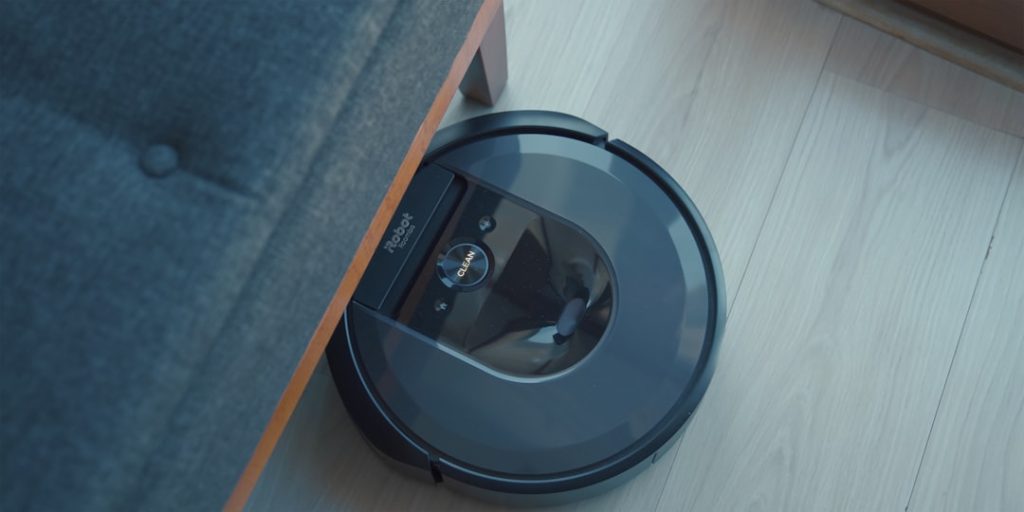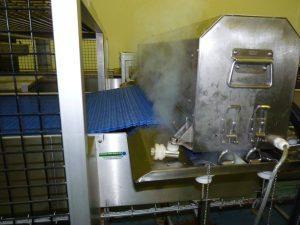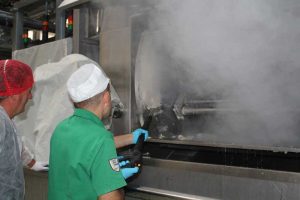Conveyor belt cleaning is a crucial aspect of maintaining a safe and efficient material handling system. Clean conveyor belts are essential for preventing product contamination, reducing the risk of equipment damage, and ensuring a hygienic working environment. Contaminants such as dust, dirt and debris can accumulate on conveyor belts, leading to product quality issues and potential health hazards.
Additionally, build-up on the belts can cause tracking problems, increased wear and tear on the equipment, and decreased operational efficiency. Therefore, regular and effective cleaning of conveyor belts is essential for ensuring the smooth and reliable operation of the entire material handling system. Furthermore, proper conveyor belt cleaning is vital for compliance with industry regulations and standards.
In industries such as food processing, pharmaceuticals and manufacturing, maintaining a clean and sanitary production environment is a top priority. Failure to keep conveyor belts clean can result in costly fines, production shutdowns and damage to the company’s reputation. Therefore, investing in a comprehensive conveyor belt cleaning programme is not only essential for operational efficiency but also for meeting regulatory requirements and ensuring consumer safety.
Summary
- Regular conveyor belt cleaning is crucial for maintaining efficiency and preventing contamination in the production process.
- Choosing the right cleaning equipment is essential to ensure thorough and effective cleaning of conveyor belts.
- Implementing regular maintenance and inspection protocols can help identify and address potential issues before they escalate.
- Training staff in proper cleaning techniques and safety protocols is key to ensuring effective conveyor belt cleaning.
- Utilising the correct cleaning agents and techniques is important to avoid damage to the conveyor belt and ensure thorough cleaning.
Choosing the Right Cleaning Equipment for Your Conveyor Belt
Factors to Consider
When choosing the right cleaning equipment, factors such as the type of conveyor belt, the nature of the conveyed materials, and the operating environment must be taken into consideration.
Industry-Specific Requirements
For example, in industries where hygiene is paramount, such as food processing and pharmaceuticals, it is essential to use cleaning equipment that is designed to meet strict sanitary standards. In addition to selecting the right type of cleaning equipment, it is also important to consider the cleaning method and frequency. Some conveyor belt cleaning systems are designed for continuous cleaning during operation, while others may require periodic shutdowns for thorough cleaning.
Optimising Cleaning Strategy
The choice of cleaning equipment and method should be based on the specific needs of your operation, taking into account factors such as production volume, material characteristics, and maintenance schedules. By investing in the right cleaning equipment and implementing a tailored cleaning strategy, you can ensure that your conveyor belts remain clean and free from contaminants, leading to improved operational efficiency and reduced maintenance costs.
Implementing Regular Maintenance and Inspection Protocols

In addition to regular cleaning, implementing comprehensive maintenance and inspection protocols is essential for ensuring the long-term performance and reliability of conveyor belts. Regular maintenance activities such as lubrication, alignment checks, and component inspections can help identify potential issues before they escalate into costly repairs or unplanned downtime. Furthermore, conducting routine inspections of the conveyor belt system can help identify areas that require additional cleaning or maintenance attention.
By proactively addressing maintenance needs, you can prevent equipment failures, extend the service life of your conveyor belts, and minimise production disruptions. It is important to establish a structured maintenance schedule that includes routine inspections, preventive maintenance tasks, and scheduled downtime for more extensive maintenance activities. By adhering to a regular maintenance regimen, you can ensure that your conveyor belts operate at peak performance levels while minimising the risk of unexpected breakdowns.
Additionally, documenting maintenance activities and inspection findings can provide valuable insights into the overall condition of the conveyor belt system and help identify trends or recurring issues that may require further attention. By prioritising regular maintenance and inspections, you can maximise the reliability and longevity of your conveyor belt system while minimising the risk of costly repairs and production interruptions.
Training Your Staff for Effective Conveyor Belt Cleaning
Proper training of staff members responsible for conveyor belt cleaning is essential for ensuring that cleaning activities are carried out effectively and safely. Training should cover topics such as the correct use of cleaning equipment, safety procedures, and best practices for maintaining clean conveyor belts. Staff members should be familiarised with the specific cleaning requirements of the conveyor belt system in their area of responsibility, including the type of contaminants to be removed, the appropriate cleaning methods to be used, and any specific safety considerations.
Furthermore, training should emphasise the importance of regular cleaning and maintenance activities in maintaining a safe and efficient working environment. Staff members should be educated on the potential consequences of inadequate conveyor belt cleaning, such as product contamination, equipment damage, and safety hazards. By instilling a culture of cleanliness and accountability among staff members, you can ensure that everyone understands their role in maintaining clean conveyor belts and upholding operational standards.
Utilising the Correct Cleaning Agents and Techniques
Selecting the correct cleaning agents and techniques is crucial for achieving effective conveyor belt cleaning while minimising the risk of damage to the belts or conveyed materials. The choice of cleaning agents should be based on factors such as the type of contaminants to be removed, the material composition of the conveyor belts, and any specific industry regulations or standards that must be adhered to. For example, in food processing facilities, it is essential to use cleaning agents that are safe for use in food contact areas and compliant with food safety regulations.
In addition to selecting the right cleaning agents, it is important to use appropriate cleaning techniques that are effective in removing contaminants without causing damage to the conveyor belts. For example, some cleaning methods may involve high-pressure water jets or steam cleaning, while others may utilise mechanical scraping or brushing. The choice of cleaning technique should take into account factors such as the type of contaminants to be removed, the material composition of the conveyor belts, and any specific operational considerations.
Monitoring and Evaluating the Effectiveness of Your Cleaning System

Regular Inspections and Performance Metrics
This can involve regular inspections of the conveyor belts to assess their cleanliness, as well as monitoring key performance indicators such as production efficiency, product quality, and equipment reliability. By tracking these metrics over time, you can gain valuable insights into the impact of your cleaning activities on overall operational performance.
Staff Feedback and Insights
Furthermore, soliciting feedback from staff members responsible for conveyor belt cleaning can provide valuable insights into the effectiveness of current cleaning practices and identify areas for improvement. Staff members may be able to provide firsthand observations on the challenges they encounter during cleaning activities and offer suggestions for enhancing the efficiency and effectiveness of the cleaning process.
Fostering a Culture of Continuous Improvement
By fostering a culture of continuous improvement and open communication, you can leverage the knowledge and experience of your team members to refine your conveyor belt cleaning system and achieve optimal results.
Troubleshooting Common Conveyor Belt Cleaning Issues
Despite best efforts to maintain clean conveyor belts, issues may arise that require troubleshooting to identify root causes and implement corrective actions. Common issues such as excessive buildup of contaminants, uneven cleaning across the width of the belt, or ineffective removal of stubborn residues may require targeted interventions to address underlying causes. Troubleshooting efforts may involve conducting root cause analysis to identify contributing factors such as inadequate cleaning equipment or techniques, improper use of cleaning agents, or operational factors that contribute to contamination buildup.
Once underlying causes have been identified, corrective actions can be implemented to address specific issues and prevent recurrence. This may involve adjusting cleaning equipment settings, revising cleaning schedules or methods, or providing additional training to staff members responsible for conveyor belt cleaning. By addressing common conveyor belt cleaning issues in a systematic manner, you can improve overall system performance while minimising the risk of production disruptions or product quality issues.
In conclusion, effective conveyor belt cleaning is essential for maintaining a safe and efficient material handling system while ensuring compliance with industry regulations and standards. By choosing the right cleaning equipment, implementing regular maintenance and inspection protocols, training staff members for effective cleaning practices, utilising appropriate cleaning agents and techniques, monitoring system effectiveness, and troubleshooting common issues, you can achieve optimal cleanliness and operational performance for your conveyor belt system. Investing in a comprehensive conveyor belt cleaning program not only enhances operational efficiency but also contributes to a safe working environment and regulatory compliance.
FAQs
What is a conveyor belt cleaning system?
A conveyor belt cleaning system is a set of equipment and procedures designed to keep conveyor belts clean and free from debris, spillage, and other contaminants. This is essential for maintaining the efficiency and safety of conveyor systems in various industries.
Why is it important to optimise a conveyor belt cleaning system?
Optimising a conveyor belt cleaning system is important to ensure the efficient operation of the conveyor system, prevent material build-up, reduce the risk of belt damage, and maintain a safe working environment. It also helps to improve overall productivity and reduce maintenance costs.
What are the key components of a conveyor belt cleaning system?
The key components of a conveyor belt cleaning system typically include belt scrapers, belt cleaners, belt brushes, and other accessories such as belt skirting, belt ploughs, and belt trackers. These components work together to remove material build-up and maintain the cleanliness of the conveyor belt.
How can I optimise my conveyor belt cleaning system?
To optimise a conveyor belt cleaning system, it is important to select the right type of cleaning equipment for the specific application, ensure proper installation and maintenance of the equipment, and regularly inspect and adjust the cleaning system to address any issues or inefficiencies.
What are the benefits of optimising a conveyor belt cleaning system?
The benefits of optimising a conveyor belt cleaning system include improved conveyor belt performance, reduced downtime and maintenance costs, increased workplace safety, and enhanced overall productivity. Additionally, optimising the cleaning system can help to extend the life of the conveyor belt and other related equipment.










